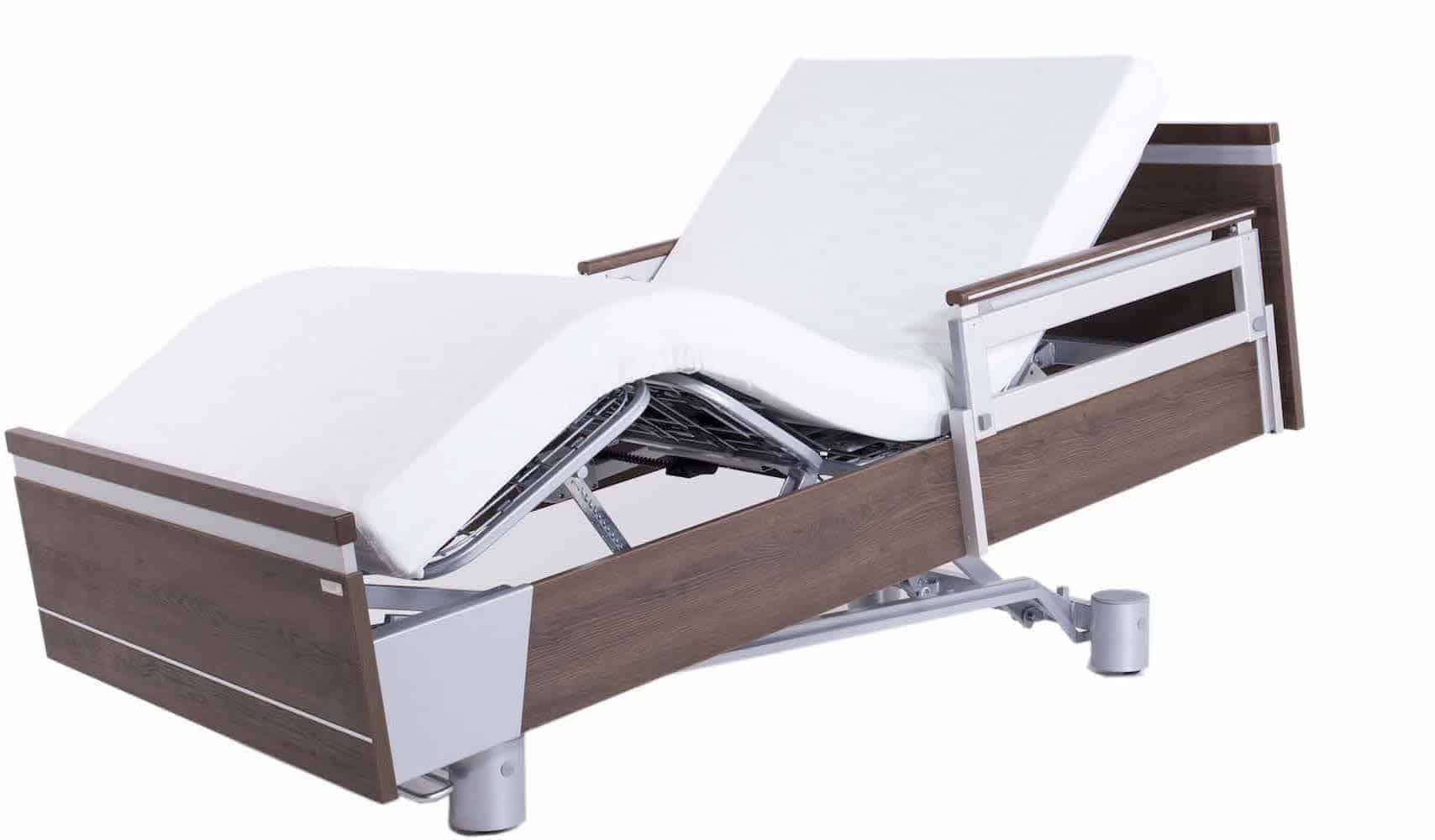One significant aspect of the environment that impacts dementia care is the presence of nature. Research has shown that exposure to natural elements, such as gardens or parks, has a positive effect on individuals with dementia. Being surrounded by nature can reduce feelings of agitation and anxiety, improve mood, and promote relaxation. Incorporating natural elements into the care environment, whether through outdoor spaces or indoor plants, can create a calming and therapeutic atmosphere for those with dementia.
Another important consideration in dementia care is the role of architecture. The design of physical spaces can greatly impact the daily lives of individuals with dementia. A well-designed environment can support their independence, safety, and overall well-being. Features such as clear signage, color contrast, and adequate lighting can help individuals navigate their surroundings and reduce confusion. Additionally, creating spaces that are familiar and reminiscent of home can provide a sense of comfort and security.
Furthermore, dementia-friendly architecture includes elements like wide hallways, handrails, and non-slip flooring to enhance mobility and prevent accidents. The layout of communal areas, such as dining rooms or activity spaces, should be easily accessible and promote social interaction. By incorporating these architectural considerations, caregivers can create an environment that supports the unique needs of individuals with dementia.
Understanding the Significance of the Care Environment in Dementia Care
The care environment plays a crucial role in the quality of life for individuals with dementia. The surroundings, including the physical space, lighting, and noise levels, can greatly impact their well-being and behavior. Dementia is a condition that is highly sensitive to its surroundings, making it essential to create an environment that is calming, familiar, and supportive to enhance the overall care experience.
The Role of the Environment in Quality of Life
Numerous studies have shown that the physical environment plays a crucial role in enhancing the quality of life for individuals with dementia. The design and layout of the care environment can greatly impact the well-being and overall experience of those living with dementia. Here are four key considerations when it comes to the role of the environment in quality of life:
- Environmental modifications: Making necessary changes to the physical environment can promote safety, comfort, and independence for individuals with dementia. This may include installing handrails, removing trip hazards, and ensuring adequate lighting throughout the space.
- Design considerations: Creating a dementia-friendly environment involves thoughtful design choices such as using contrasting colors, clear signage, and familiar decor to reduce confusion and promote a sense of familiarity.
- Sensory stimulation: Incorporating sensory stimuli such as soothing music, pleasant scents, and tactile objects can help individuals with dementia feel more engaged and connected to their surroundings.
- Personalization: Allowing individuals with dementia to personalize their living space with familiar items and photographs can provide a sense of identity and promote a feeling of being at home.
Dementia as a Condition Sensitive to Surroundings
Several factors contribute to the sensitivity of dementia as a condition, and understanding the significance of the care environment is key in providing effective dementia care. Dementia care presents unique challenges, as individuals with dementia often experience difficulties with memory, cognition, and behavior. The environment plays a crucial role in managing these challenges and promoting the well-being of individuals with dementia. Environmental design strategies can greatly impact the quality of care provided. Creating a calming and familiar environment can help reduce agitation and confusion. This can be achieved by incorporating elements such as natural lighting, clear signage, and familiar objects. Additionally, ensuring a safe and secure environment is essential to prevent accidents and promote independence. By considering the specific needs and sensitivities of individuals with dementia, caregivers can create an environment that supports their well-being and enhances their overall quality of life.
The Influence of Home Environment on Dementia Care
The home environment plays a crucial role in dementia care, as it directly impacts the safety, comfort, and overall well-being of individuals with dementia. Creating a dementia-friendly home involves adapting spaces to minimize confusion, reducing hazards, and promoting a sense of familiarity and calm. By making thoughtful modifications and incorporating supportive design elements, caregivers can create a nurturing and accommodating environment that enhances the quality of life for individuals with dementia.
Creating a Dementia-Friendly Home
Frequently, the home environment plays a crucial role in shaping the quality of dementia care and creating a supportive atmosphere for individuals with dementia. Adapting spaces and designing for comfort are key considerations when creating a dementia-friendly home. Here are four important factors to keep in mind:
- Safety: Ensuring that the home is free from hazards and has clear pathways can help prevent accidents and falls.
- Familiarity: Incorporating familiar objects, photographs, and mementos can provide a sense of comfort and familiarity for individuals with dementia.
- Sensory stimulation: Creating a soothing and calming environment with appropriate lighting, colors, and textures can help reduce agitation and promote relaxation.
- Simplification: Simplifying the layout and design of the home, such as using clear signage and minimizing clutter, can help individuals with dementia navigate their surroundings more easily.
Adapting Spaces for Safety and Comfort
In order to ensure the safety and comfort of individuals with dementia, it is imperative to adapt the home environment to meet their specific needs and challenges. Creating a dementia-friendly design involves making environmental modifications that promote independence and reduce the risk of accidents. This can include removing tripping hazards, installing handrails and grab bars, using contrasting colors to enhance visibility, and organizing spaces to minimize confusion. By incorporating these modifications, individuals with dementia can navigate their homes more easily, feel more secure, and maintain a sense of familiarity. However, while adapting the home environment is crucial, it is also important to consider the impact of care facilities on dementia patients.
The Impact of Care Facilities on Dementia Patients
Care facilities play a crucial role in providing specialized care for dementia patients. Memory care units are designed to create tailored environments that promote familiarity and reduce confusion for individuals with dementia. Nursing homes, on the other hand, face the challenge of balancing institutional needs with personalized care to ensure the well-being of their residents. By understanding the impact of care facilities on dementia patients, we can strive to create environments that enhance their quality of life and support their unique needs.
Memory Care Units: Tailored Environments
Within memory care units, the environment is carefully designed and customized to meet the unique needs of dementia patients. Some key elements of these tailored environments include:
- Calming and soothing color schemes that promote relaxation and reduce anxiety.
- Clear signage and visual cues to aid navigation and reduce confusion.
- Sensory stimulation through the use of music, aromatherapy, and tactile objects.
- Safety features such as handrails, non-slip flooring, and secure outdoor spaces.
These design choices aim to create a therapeutic and supportive atmosphere for individuals with dementia, enhancing their overall well-being and quality of life. By incorporating these elements, memory care units can optimize the physical and emotional health of their residents, providing a safe and comfortable environment where they can thrive. Now, let’s explore how nursing homes balance institutional needs with personalized care.
Nursing Homes: Balancing Institutional Needs with Personalized Care
Despite the challenges, nursing homes must strive to balance institutional needs with personalized care in order to effectively support and enhance the well-being of dementia patients. Nursing homes face various challenges when it comes to providing care for individuals with dementia. These challenges include maintaining a safe and secure environment, managing the complex needs of residents, and ensuring that the care provided is individualized and person-centered. To overcome these challenges, nursing homes need to adopt a person-centered approach that focuses on the unique needs and preferences of each resident. This approach involves creating a supportive and engaging environment that promotes independence, meaningful social interactions, and a sense of purpose. By prioritizing personalized care and tailoring the environment to meet the specific needs of dementia patients, nursing homes can provide the highest quality of care and enhance the overall well-being of their residents.
Scientific Insights into Environmental Effects on Dementia
Scientific research has provided valuable insights into the impact of the environment on dementia care. Through case studies and findings, researchers have identified specific elements of environmental design that can greatly affect the well-being and quality of life for individuals with dementia. These insights highlight the importance of creating spaces that are safe, calming, and supportive, with considerations for lighting, noise levels, familiar cues, and meaningful engagement opportunities.
Research on Environmental Design
Throughout decades of research, numerous studies have provided valuable insights into the effects of environmental design on individuals with dementia. These studies have highlighted the importance of creating a supportive and dementia-friendly environment through the implementation of specific design principles and environmental interventions. Here are some key findings from the research:
- Person-centered design: Tailoring the environment to the individual’s needs and preferences can enhance their sense of control and well-being.
- Safety measures: Implementing features such as handrails, non-slip flooring, and clear signage can reduce the risk of falls and accidents.
- Sensory stimulation: Incorporating elements like natural light, soothing colors, and familiar objects can promote a calming and engaging atmosphere.
- Wayfinding aids: Providing clear and intuitive navigation cues, such as visual markers and memory aids, can help individuals with dementia navigate their surroundings more easily.
Case Studies and Findings
Case studies and research findings have provided valuable scientific insights into the effects of the environment on individuals with dementia. These studies have highlighted the importance of dementia-friendly architecture and personalized care approaches in creating a supportive and nurturing environment for those with dementia.
The physical and social environments play a crucial role in dementia care, influencing residents’ behaviors, well-being, and quality of life (Kovach, 1997; Coulson, 1993; Morgan, 1997; Chaudhury, 2018). A therapeutic environment, characterized by increased social interaction and interactive staff-resident behavior, can significantly improve care (Kovach, 1997). The total environment, including physical layout, care organization, and carer processes, also impacts care and management (Coulson, 1993). The social environment, particularly stimulation, human contact, safety, individualized care, and flexibility, is perceived to have a greater impact on residents’ quality of life and functional ability (Morgan, 1997). The physical environment, including unit size, spatial layout, homelike character, and sensory stimulation, also influences residents’ behaviors and well-being (Chaudhury, 2018). However, further research is needed to explore the specific interventions and their impact on residents with dementia.
Strategies for Optimizing the Dementia Care Environment
Creating an optimal dementia care environment requires careful consideration of lighting, color, and spatial design. Adequate lighting can reduce confusion and improve visibility, while color choices can evoke positive emotions and promote a sense of calm. Incorporating sensory stimuli, such as familiar objects or soothing music, can engage the senses and provide comfort. Additionally, establishing a familiar routine and maintaining familiar surroundings can enhance a person’s sense of security and well-being.
Lighting, Color, and Spatial Considerations
The lighting, color, and spatial considerations play a crucial role in optimizing the dementia care environment.
- Lighting design: Implementing appropriate lighting design can have a significant impact on the well-being of individuals with dementia. Soft, diffused lighting can create a calming and comfortable atmosphere, reducing agitation and improving overall mood.
- Spatial navigation: Creating a clear and easily navigable space is essential for individuals with dementia. Well-defined pathways, contrasting colors on walls and floors, and clear signage can help them navigate their surroundings with greater ease, reducing confusion and anxiety.
- Color choices: Thoughtful color choices can also contribute to a positive dementia care environment. Using warm, soothing colors can create a sense of familiarity and promote relaxation. Additionally, contrasting colors can aid in distinguishing different areas and objects, assisting with orientation.
- Natural elements: Incorporating natural elements, such as plants or outdoor views, can have a therapeutic effect on individuals with dementia. These elements can evoke a sense of connection to nature and provide a calming and comforting environment.
Incorporating Sensory Stimuli
Several sensory stimuli can be incorporated into the dementia care environment to enhance the overall experience and well-being of individuals with dementia. Sensory therapy plays a crucial role in creating a therapeutic environment that promotes relaxation, engagement, and emotional well-being. One effective strategy is to use soothing sounds, such as gentle music or nature sounds, to create a calming atmosphere. Additionally, incorporating pleasant aromas, like lavender or vanilla, can help reduce anxiety and promote a sense of comfort. Visual stimuli, such as artwork or nature scenes, can provide a positive and stimulating environment. Tactile experiences, such as soft fabrics or textured objects, can also be beneficial for sensory stimulation. By incorporating these sensory stimuli, caregivers can create a more engaging and supportive environment for individuals with dementia, promoting their overall quality of life and well-being.
The Importance of Familiarity and Routine
Familiarity and routine are essential aspects to consider when optimizing the dementia care environment. Establishing a sense of familiarity and routine for individuals with dementia can greatly improve their overall well-being and quality of life. Here are four strategies for incorporating familiarity and routine into the dementia care environment:
- Consistent daily schedule: Creating a consistent daily schedule helps individuals with dementia feel more secure and in control. It provides a sense of predictability and reduces confusion and anxiety.
- Familiar surroundings: Keeping the environment familiar by using familiar items, photographs, and personal belongings can evoke positive memories and a sense of comfort for individuals with dementia.
- Clear signage and cues: Using clear signage and cues throughout the environment can help individuals with dementia navigate their surroundings independently and confidently.
- Structured activities: Engaging individuals with dementia in structured activities, such as music therapy or reminiscence therapy, can provide a sense of purpose, stimulation, and enjoyment.
The Role of Technology in Enhancing Dementia Care Environments
Technology plays a crucial role in enhancing dementia care environments by providing assistive technologies for safety and engagement. These technologies, such as wearable devices and smart home systems, can help monitor the well-being of individuals with dementia and ensure their safety. Additionally, innovations in monitoring and communication, such as remote monitoring systems and video communication platforms, can improve the quality of care and facilitate better communication between caregivers and individuals with dementia.
Assistive Technologies for Safety and Engagement
With the advancement of assistive technologies, there is an increased potential for improving safety and engagement in dementia care environments. These technologies are designed to enhance the quality of life for individuals living with dementia and provide support for their caregivers. Here are some key ways in which assistive technologies can make a difference:
- Assistive technologies for communication: These tools help individuals with dementia to maintain meaningful connections with their loved ones and healthcare providers. They include devices such as video calling platforms, voice-activated assistants, and wearable devices that can track and share vital information.
- Technology for cognitive stimulation: Cognitive stimulation is crucial for individuals with dementia to maintain mental function and slow down cognitive decline. Assistive technologies such as virtual reality systems, brain training apps, and interactive games can provide cognitive stimulation, improve memory, and enhance overall cognitive functioning.
- Safety monitoring systems: These technologies help ensure the safety of individuals with dementia by detecting falls, tracking movements, and providing real-time alerts to caregivers. They include devices such as wearable GPS trackers, motion sensors, and smart home monitoring systems.
- Reminders and medication management: Assistive technologies can assist individuals with dementia in remembering important tasks and managing their medications. These technologies include medication reminder apps, automated pill dispensers, and electronic calendars with reminder features.
Innovations in Monitoring and Communication
Several cutting-edge advancements have been made in monitoring and communication technology, significantly improving the dementia care environment. Innovation in monitoring technology has allowed for better tracking and monitoring of patients with dementia, ensuring their safety and well-being. For example, wearable devices can track the location of individuals with dementia, providing peace of mind for caregivers and reducing the risk of wandering. These devices can also monitor vital signs and send alerts in case of emergencies. Additionally, communication strategies for dementia care have been enhanced through technology. Video conferencing platforms and specialized apps enable remote communication between caregivers, healthcare professionals, and individuals with dementia, facilitating better coordination and support. These innovations not only improve the quality of care but also alleviate the burden on caregivers, allowing them to provide more effective and personalized care to individuals with dementia.
Challenges in Creating Supportive Dementia Care Environments
Creating supportive dementia care environments comes with its fair share of challenges. One of the main challenges is budget and resource limitations, as providing the necessary infrastructure and resources for dementia care can be costly. Another challenge is finding the right balance between safety and independence, as it is important to create an environment that promotes safety and reduces risks, while still allowing individuals with dementia to maintain a sense of independence and autonomy. These challenges require careful planning, collaboration, and innovative solutions to ensure that dementia care environments are truly supportive and beneficial for individuals with dementia.
Budget and Resource Limitations
Although limited budgets and resources pose challenges, creating supportive dementia care environments is crucial for enhancing the quality of life for individuals with dementia. Resource allocation plays a significant role in determining the level of care that can be provided within the available budget. It is essential to prioritize cost effectiveness to ensure that the allocated resources are utilized efficiently. However, the limitations in budget and resources can evoke feelings of frustration, as the desire to provide the best care possible may be hindered. It is crucial for caregivers and healthcare professionals to remain empathetic and detail-oriented in finding innovative solutions to overcome these challenges. By recognizing the importance of supportive dementia care environments and working within the constraints of limited budgets and resources, we can strive to create environments that promote safety, independence, and a high quality of life for individuals with dementia. Transitioning to the subsequent section, balancing safety with independence, is another crucial aspect of designing supportive dementia care environments.
Balancing Safety with Independence
As caregivers and healthcare professionals strive to design supportive dementia care environments, they must navigate the challenge of balancing safety with independence. People living with dementia often experience a decline in cognitive abilities, which can make them more vulnerable to accidents and injuries. However, it is equally important to promote their sense of independence and autonomy. To achieve this delicate balance, adaptation strategies and environmental modifications can be implemented. These strategies involve making changes to the physical environment to reduce potential hazards while still allowing individuals with dementia to engage in daily activities independently. Examples of environmental modifications include installing handrails and grab bars, removing tripping hazards, labeling drawers and cabinets, and using color contrast to improve visibility. By implementing these adaptation strategies, caregivers can create a supportive environment that promotes safety without compromising independence.
The ongoing evolution of dementia care environments is crucial in providing the best possible care for individuals with dementia. By empowering patients and caregivers through thoughtful design, we can create environments that promote safety, comfort, and independence. It is important to continue exploring innovative solutions and incorporating the latest research in order to optimize dementia care environments and enhance the quality of life for those affected by this condition.
- example
Frequently Asked Questions About Environment and Dementia Care
The environment plays a crucial role in influencing comfort, behavior, and safety, significantly impacting the overall well-being of individuals with dementia.
Designing for dementia care involves reducing confusion and anxiety, enhancing navigation, and promoting independence through thoughtful spatial layout and sensory cues.
Sensory stimulation in dementia care helps in mood enhancement, memory recall, and engagement, thereby improving the quality of life for dementia patients.
Social interactions help maintain cognitive functions, reduce feelings of isolation, and increase emotional well-being in individuals with dementia.
Loud noises, clutter, poor lighting, and overstimulation can lead to increased confusion, agitation, and disorientation in dementia patients.
















